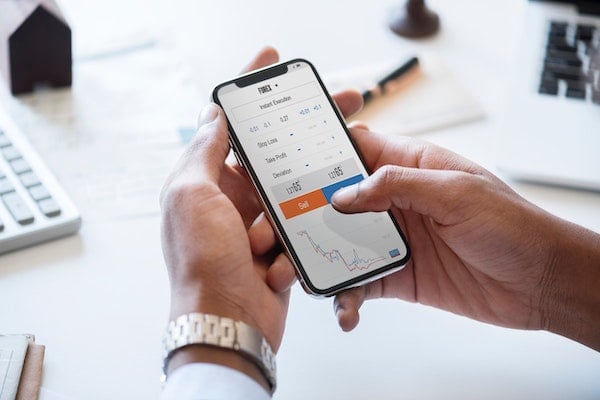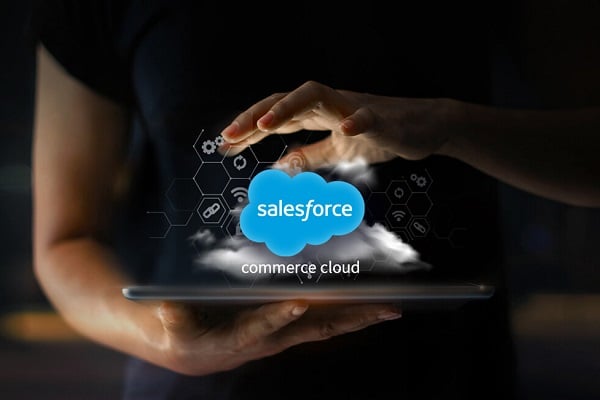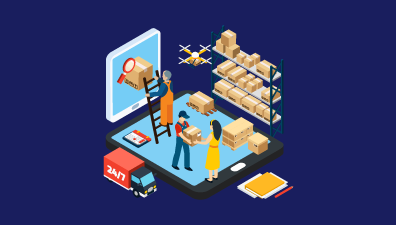Mobile commerce helps businesses and analyzes on-the-go financial data. Individuals could only trade individually or through a fixed telephony at some stage. These constraints have been removed by mobile devices, such as smart phones and PDAs. To find mobile commerce definition and examples of mobile business in daily life, you don’t have to look far.
Table of Contents
What is a mobile commerce?
Mobile commerce is the use of portable handheld devices like cell phones and tablets, including the buying and selling of goods, online banking and paying bills, to carry out commercial transactions online. There is increasing usage of mobile commerce. In 2017, the mobile trade revenues in the United States were projected to be $207.2 billion, according to the market research firm Statista.
Mobile commerce history
Kevin Duffey invented the mobile trade term at the start of the Global Mobile Commerce Forum for the first time in 1997. Coca-Cola, which has installed two cell phone-enabling distribution machines, accepted payment via SMS text message in Helsinki, bringing this idea to life in the same year.
The principle was further validated in 1998 when Radiolinja allowed the selling of digital content such as ringtones on mobile devices. After 2000, there was no reversal. Handsets made it easier for participants to pay and to vote for preferred realities in relation to parking, train tickets, etc.
In 2004, also with the introduction of GCash, the wallet was transferred from your pocket to your cell phone. And then the iPhone took place, moving the mobile business from SMS to real apps. The mobile trade is made possible by smartphones like IOS and Android, as we know it today. We can now purchase and rent goods, utilities, inventories, cryptocurrency and other equipment using mobile telephones, carry out all banking transactions using a smartphone and even use mobile telephone for these transactions as a prepayment wallet.
Mobile commerce examples
Mobile banking
Mobile banking is one of common mobile commerce examples because it enables customers, regardless of where they are, to check their bank balance. Many banks provide a free service that provides customers with a text message to check their balance. Smartphone applications are a warning when money begins to run down and depositors can move money without a bank visit.
Mobile purchases
Smartphones allow consumers to shop on a standard computer just as they would. Customers can buy products using a mobile web browser or make it available for download using one of the many online applications. In 2008, Amazon released TextBuyIt, which enables shoppers to check out with text messages.
Users can pay for coffee from more than 1,000 Starbucks sites via the Starbucks Card Mobile application without taking out wallets or digging into bags.
Mobile investment
As the stock market is continuously changing, investors also use cell phones for transactions and stock prices. Many smartphones feature preinstalled inventory control software. Additional functionality is provided by third-party applications. A stock broker is simply a phone call away when it comes to buying and selling shares.
Top 5 mobile commerce solutions
# Addon Solutions
Addon Solutions is a leading mobile commerce application development company in India and the United States. Where you can get customized and quality custom mobile commerce product development services by recruiting dedicated mCommerce application developers experts team, hiring a developer of mCommerce for expense, budget and agile solution.
Addon Solutions has mCommerce software developers who have experience in the creation of mobile business applications and are capable of providing comprehensive and customized mCommerce solutions for companies. For developing mobile commerce solutions, they have high tech experience on various mobile security aspects. Therefore, with recent encryption innovations your transactions and sensitive data exchanges remain safe and secure.
With long experience in mCommerce they are mobile technology experts. They can therefore provide a robust mCommerce development consultancy to pick their valued and prospective customers for their projects, the correct development plans, software, resources, structure, additional products, valuable 3rd party integrations and many without an extra charge.
# Adobe for mobile commerce
Adobe commerce
Discover the power to produce exclusive, unlimited shopping experiences and provide cloud services with safety, efficiency and low TCO benefits. Enjoy rich, unusually large features, limitless customization skills and seamless Adobe Commerce third-party integrations.
Order management
Bridge the gap between online and in-house and drive customer engagement seamlessly with a distribution system that allows for versatile, convenient and cost-effective supply. With order management, expand your business network.
Business intelligence
Get insights into the business intelligence you need to take action. To identify new opportunities for growth, analyze your top customers, products and promotions. Share your information with only a few clicks in your company.
The way developers create mobile experiences is changed by PWA Studio. They are focusing on simplifying and enhancing front-end production for Adobe Commerce.
# Salesforce commerce cloud
Salesforce commerce cloud is one of the most common mobile commerce solutions. It brings the consumer experience together and allows companies to optimize their transactions from buying to post selling. The platform includes many functions in various categories such as processes, expertise and intelligence.
Experience is a field in which consumers are able to better orchestrate prices, goods, content and promotions. On the other hand, operations provide the capability to enhance the key functions across all networks – e.g. by linking back office functions to order efficiency. Intelligence concerns market insights powered by data and customer customization.
All things considered, this capability can be used by virtually any medium to drive business, whether they are a web application, a mobile app, or a store.
# IBM mobile commerce
IBM’s platform is an e-commerce system which includes in an integrated package functions such as marketing, customer service and sales. The B2C (Business To Customer) works for the unified network as well as the B2B (Business to Commercial) environment.
Through the app, businesses can give their customers customized marketing messages and promotions, allow customers to conduct product comparisons side-by-side, provide shop locations and get an accurate view of all orders and availability.
In all, IBM mobile commerce aims to help businesses provide an outstanding experience to their customers.
# Oracle commerce platform
Oracle’s mobile ecommerce platform supports companies seeking to offer an all-round experience with a scalable and proven arena. It allows company owners to handle all-in-one experiences and personalize ads, content and navigation, and monitor them.
In summary, companies can use the platform to introduce new products, markets or promotions quickly. It provides businesses an opportunity for international growth by reaching new locations and segments. B2B and B2C modules supporting various sale models can be taken advantage of by users.
>> Read more: Top 9 mobile commerce trends that merchants should know
Mobile commerce case study – The successful story of Catbird
The New York Times describes Catbird as the ‘cool girl jewelry girl go-to since 2004,’ creating exciting, custom-made jewelry upon request. Their impressive necklaces, rings, and bracelets, are all produced and mostly found in celebrity locations in the famous offices of the company in Brooklyn, New York. Yet, young Catbird smartphone customers, not their desktops, are glued to their mobile phones. They wanted to build an elegant yet enjoyable mobile business experience, as well as a highly functional brand.
Magento has been used to create personalized features, including in-stock, out-of-stock and lead time messages, to ensure maximum inventory visibility for consumers. They also introduced personalized gift messaging, wishlist features and same-day delivery to consumers who can’t wait to be ordered.
Most significantly, the mobile trade topic was designed to support a smooth, all-rounder experience, independent of the desktop store. It followed the default Magento Commerce 2 stack with a jQuery, KnockoutJ and JavaScript framework that makes it look and sound fantastic on all mobile devices. It’s responsive web designs.
Catbird’s mobile business experience is now entirely different from the desktop experience – and is tailored for consumer conversion. Navigation is easy, clean and quick – with a fully mobile website – while optimizing media (beautiful images of their jewelry). And Zendesk’s customer service integration leads to a fast, seamless and fun eCommerce experience.
The Catbird team has evolved today and is able to balance its expertise on-the-spot with its famous campaigns. They are now better suited to adapt their contents to their smartphone users and the Catbird customer has the opportunity to use new resources such as instant buy, PayPal Express Checkout and other checkout options.
Final words
Nothing denies the importance of speed and time-to-market today. So businesses are tempted to use mobile commerce platforms to provide their consumers with mobile experiences and to begin using mobile analytics at the earliest opportunity.
However, companies have to behave cautiously when developing mobile trade applications. After all, the customer base may lose confidence and loyalty.
You will gain new followers and offer a great experience on channels for your target audiences investing time by delivering a smooth, secure and engaging experience of your mobile app. Therefore, instead of working out-of-the-box solutions, it’s worth cooperating with the custom mobile trade application development business.















